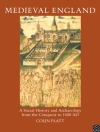What do we know about early modern sex, and how do we know it? How, when, and why does sex become history? In Thinking Sex with the Early Moderns, Valerie Traub addresses these questions and, in doing so, reorients the ways in which historians and literary critics, feminists and queer theorists approach sexuality and its history. Her answers offer interdisciplinary strategies for confronting the difficulties of making sexual knowledge.
Based on the premise that producing sexual knowledge is difficult because sex itself is often inscrutable, Thinking Sex with the Early Moderns leverages the notions of opacity and impasse to explore barriers to knowledge about sex in the past. Traub argues that the obstacles in making sexual history can illuminate the difficulty of knowing sexuality. She also argues that these impediments themselves can be adopted as a guiding principle of historiography: sex may be good to think with, not because it permits us access but because it doesn’t.
Table of Content
Preface
Chapter 1. Thinking Sex: Knowledge, Opacity, History
PART I. MAKING THE HISTORY OF SEXUALITY
Chapter 2. Friendship’s Loss: Alan Bray’s Making of History
Chapter 3. The New Unhistoricism in Queer Studies
Chapter 4. The Present Future of Lesbian Historiography
PART II. SCENES OF INSTRUCTION; OR, EARLY MODERN SEX ACTS
Chapter 5. The Joys of Martha Joyless: Queer Pedagogy and the (Early Modern) Production of Sexual Knowledge
Chapter 6. Sex in the Interdisciplines
Chapter 7. Talking Sex
PART III. THE STAKES OF GENDER
Chapter 8. Shakespeare’s Sex
Chapter 9. The Sign of the Lesbian
Chapter 10. Sex Ed; or, Teach Me Tonight
Notes
Bibliography
Index
Acknowledgments
About the author
Valerie Traub is Adrienne Rich Distinguished University Professor of English and Women’s Studies at the University of Michigan. She is author of The Renaissance of Lesbianism in Early Modern England and Desire and Anxiety: Circulations of Sexuality in Shakespearean Drama.












